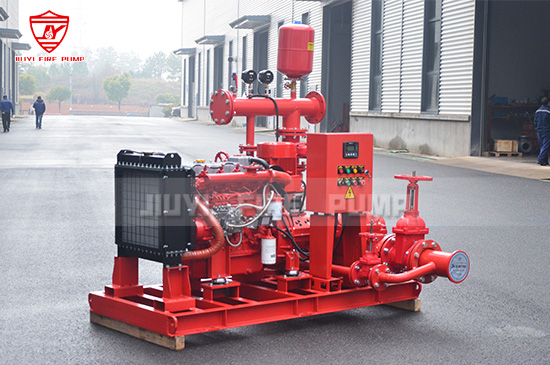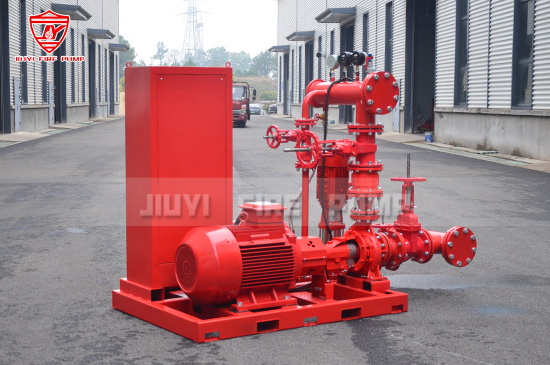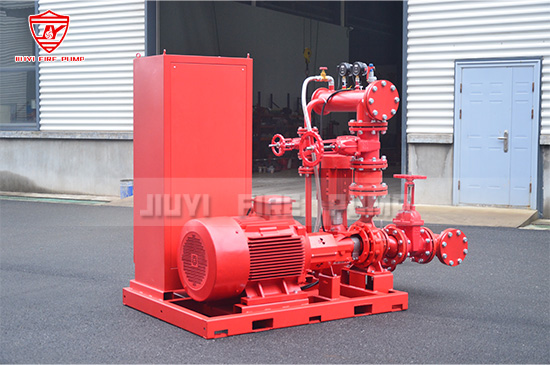Diesel fire pumps play a critical role in fire protection systems, especially in facilities where electric power supply is unreliable. As robust as these systems are, they are not immune to wear and tear. Understanding which components of diesel fire pumps are most prone to wear helps facility managers, maintenance teams, and fire safety engineers develop better inspection and maintenance plans—ensuring system readiness when emergencies arise.
In this article, we will break down the diesel pump components most susceptible to degradation, explain the causes of wear, signs of failure, and how to prevent premature damage through smart maintenance strategies.

Bearings support the rotating shaft inside the pump and engine. They are subject to constant motion and friction. Even with lubrication, bearings can degrade over time due to:
Improper alignment
Contamination (dirt, water, or degraded lubricant)
Excessive vibration or cavitation
Signs of Wear:
Unusual noise or grinding sounds
Overheating
Increased vibration
Prevention Tips:
Regularly inspect alignment, keep lubricant clean, and monitor for abnormal sounds during operation.
Seals are used to prevent leakage between the rotating shaft and stationary parts of the pump. Over time, seals can wear due to:
Friction and heat
Chemical corrosion from water additives
Abrasion from impurities in the water
Signs of Wear:
Visible leakage
Reduced pressure
Excess pump vibration
Prevention Tips:
Use high-quality, compatible seal materials and replace seals during scheduled maintenance rather than waiting for failure.
The impeller is responsible for moving water by converting mechanical energy into hydraulic energy. It’s constantly exposed to water flow and pressure, and may suffer from:
Cavitation damage
Corrosion (especially with untreated or salty water)
Erosion from suspended particles
Signs of Wear:
Reduced flow or pressure
Vibrations or noise
Physical pitting on impeller surface
Prevention Tips:
Use corrosion-resistant materials, implement filtration, and inspect the impeller during each maintenance cycle.

In the diesel engine section of the fire pump, piston rings and cylinder liners experience constant combustion pressure. Wear occurs due to:
High temperatures
Incomplete combustion
Poor lubrication
Signs of Wear:
Loss of compression
Blue or black exhaust smoke
Engine knocking
Prevention Tips:
Regularly change oil, use quality fuel, and inspect during engine overhauls.
Injectors control the amount and timing of fuel entering the combustion chamber. They can degrade due to:
Fuel impurities
Carbon build-up
Wear from high-pressure operation
Signs of Wear:
Reduced engine performance
Hard starting
Unstable RPM or engine misfire
Prevention Tips:
Use clean, high-quality diesel fuel, and clean or replace injectors as part of routine engine maintenance.
A diesel engine generates significant heat, requiring effective cooling. Over time, cooling systems wear due to:
Scaling or rust build-up
Cracked hoses
Thermostat failure
Signs of Wear:
Overheating
Leaking coolant
Fluctuating temperature gauge
Prevention Tips:
Flush the cooling system regularly and replace hoses and thermostats as needed.
Batteries start the diesel engine and supply initial power. Over time, they deteriorate due to:
Discharge from infrequent use
Sulfation on terminals
Faulty alternator or charger
Signs of Wear:
Engine won’t start
Dim panel indicators
Corroded terminals
Prevention Tips:
Check charge regularly, clean terminals, and follow NFPA 25 recommendations for battery maintenance.
The nature of diesel fire pump operation contributes to wear in several ways:
Standby Operation: These pumps often sit idle until needed, leading to condensation, fuel degradation, or battery drain.
High Stress at Start-Up: Diesel engines experience a sudden load when activated.
Environmental Conditions: Exposure to heat, moisture, and dust can accelerate deterioration.
Fuel and Water Quality: Contaminants accelerate internal component wear.
Preventive maintenance and routine inspections are key to extending the life of diesel fire pumps. Best practices include:
Weekly: Run pump to verify starting and performance
Monthly: Inspect battery, oil levels, and cooling system
Quarterly: Check for leaks, vibrations, and unusual noises
Annually: Conduct full flow test and engine inspection
Change oil and lubricate moving parts as per manufacturer’s recommendations. Use high-quality oil with additives for diesel engines.
Install filters on both fuel and water inlets. Regularly drain water separators and clean tanks to prevent sludge build-up.
Protect the fire pump system from excessive heat, cold, and moisture by housing it in an insulated and ventilated space.
Don’t wait for failure. Replace wear-prone parts like bearings, seals, and filters proactively based on run-time and manufacturer specs.

Diesel fire pumps are designed to operate reliably during emergencies—but only if maintained properly. Components such as bearings, seals, impellers, and engine parts are vulnerable to wear, especially when systems are infrequently used. Understanding which parts wear most and why helps teams implement smarter maintenance programs that improve safety, reduce downtime, and save long-term costs.
Whether you manage an industrial site, hospital, warehouse, or high-rise building, inspecting and maintaining these critical parts is essential for system readiness. At jiuyi fire pump, we not only manufacture high-quality diesel fire pumps but also offer support for long-term performance through spare parts supply and technical guidance.
For more information about our diesel fire pump systems and maintenance best practices, contact our team today.